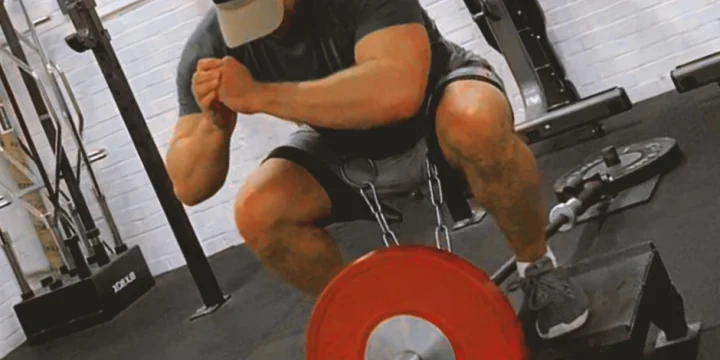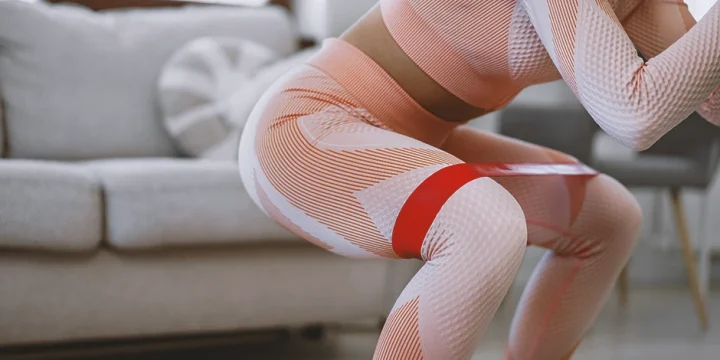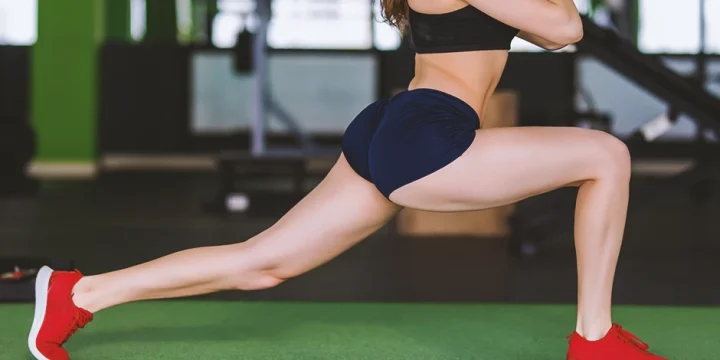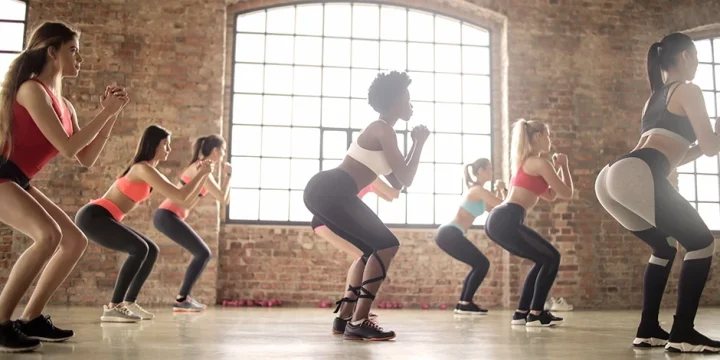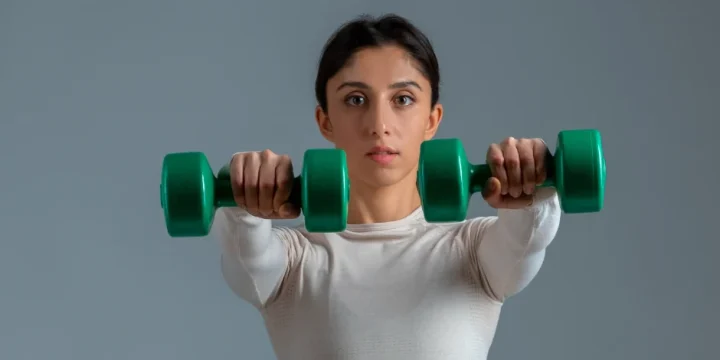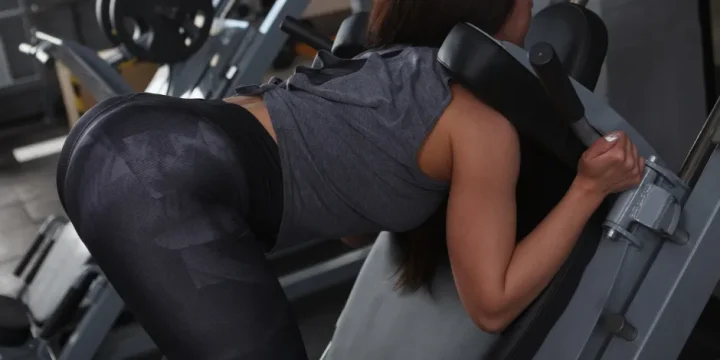While the front and back squat movements are among my favorite workouts, as a certified personal trainer and strength coach, I know how important it is to have variety in your routine.
It’s also the case that some people don’t feel comfortable with the front squat, or they feel like it’s not challenging enough.
So, I got together with five other personal trainers to find out what kind of barbell front squat alternative workouts we could come up with.
We also had seven clients put these exercises to the test for five weeks to make sure they delivered results.
Quick Summary
- Choosing front squat alternatives like the goblet squat, split squat, and even step-ups can be a great way to introduce a bit of variation into your routine.
- Some people might also struggle with front squats, but with some simple alternatives, you can still achieve very similar results.
- According to Medical News Today, doing squats can develop back and core strength.
- One thing to keep in mind is that adding front squat variations will strain your muscles differently, and you’ll want to ensure your supplement stack supports muscle recovery.
10 Front Squat Alternatives

While I still believe squats are the king of all exercises, you can substitute them for other exercises once in a while, especially when you're in active recovery.
You can pick any front squat alternative that suits your skill level to make a big difference in your leg workout routine.
1. Goblet Squat
For this exercise, you’ll need a dumbbell or a kettlebell, and don’t be afraid to pick up a heavy one.
Here’s what you need to do:
- Get into the starting position with your feet shoulder-width apart.
- Hold the kettlebell or dumbbell with both hands in front of your chest.
- Start the goblet squat by slowly lowering your body.
- Then push your body back up through your feet while keeping a neutral spine.
- Repeat 8–10 goblet squats for bulking and 10-15 for endurance and toning.
“Neutral spine is the natural position of the spine when all three curves of the spine—cervical (neck), thoracic (middle), and lumbar (lower)—are present and in good alignment.” - Kristin McGee, CPT
Related: Crush Grip Goblet Squat: Guide
2. Weighted Walking Lunges
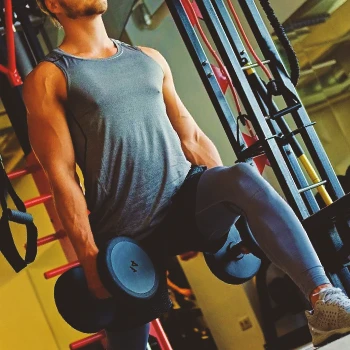
For this front squat alternative, you’ll need a pair of dumbbells to get more out of fewer lunges.
Don’t be afraid to pick a heavier load, as you really want to start feeling these after eight reps.
Here’s what you do:
- Stand with your feet hip-width apart and a dumbbell in each hand by your side.
- Take a large step forward and then lower your body down until the forward leg is at a right angle.
- Now push your body up through your front foot and bring your back foot next to the other.
- Then step forward with the other foot and repeat the process 15 times.
- Like with front squats, the movement forces you to keep an upright torso.
3. Safety Bar Squat
If you don’t feel comfortable with the back or front rack position, then this could be an ideal option. It requires a special safety bar, which has handles that come out to the front.
Here's how you do them:
- Set up the rack for your height and get the bar into a back squat position
- Slowly lower your buttocks down, at least to knee height.
- Then push your body back up again until you’re back in a standing position.
- Make sure you maintain a neutral spine alignment for the entire movement to avoid strain on the lower back.
- Do eight reps for bulking up and 10–15 reps for toning.
Read More: Benefits of Safety Squat Bars: Why You Should Use Them
4. Cross-arm Front Squat
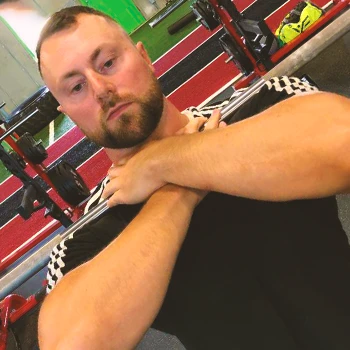
This is the closest alternative to the standard front squat. In my experience, this is ideal for people who might have some mobility or injury limitations in their wrists.
Here’s what to do:
- Get into the front rack position with the barbell across the top of your chest, right in front of your throat.
- Cross your arms in front of you and grip the bar on each side of your neck.
- Perform the standard front squat movement by lowering down slowly and pushing back up with force.
5. Barbell Split Squat
This is also known as Bulgarian split squats, and it’s like a bit of a mix of front squats and lunges.
Make sure you pick a lighter load than a standard front squat, as one leg will be carrying most of the weight.
Here’s what you do:
- Set yourself up with a barbell across your shoulders and upper chest.
- Take a step forward as if you’re about to start a forward lunge.
- Slowly lower your body down until your front knee is at a right angle.
- Then, push yourself back up and repeat the movement before switching to the other leg.
6. Overhead Squat
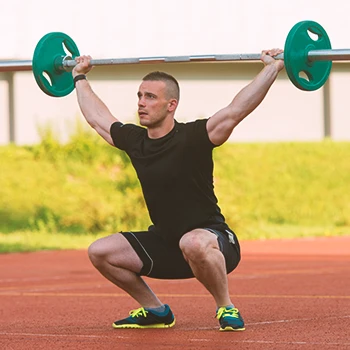
Here is an advanced version of front squats that is a great way to work on your upper body as well.
Make sure you have a spotter when you do it for the first time.
Here's how you do it:
- Set the rack position to chest-high and step under the bar so that it rests on your upper chest.
- Step out of the rack and push the bar up over your head like a military press.
- Now perform the standard movement, like front squats, while balancing the bar over your head.
- Repeat this for up to 12 reps.
7. Leg Press
If your gym doesn’t have a hack squat machine, then using the leg press machine is a great alternative to front squats that a lot of people may feel more comfortable with.
Here's how you do the leg press with good form:
- Set the machine up with a reasonably high load.
- Your feet should be about shoulder-width apart and comfortable on the footplate.
- Slowly push the plate away from your body and then lower it back down again.
Related: Leg Press Foot Placement Positions
8. Zercher Squat
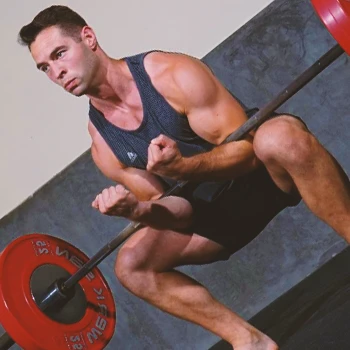
The Zercher squat is a variation of the front squat that strongmen use in preparation for competitive events.
Practice this with a low weight first to get used to the movement.
Here's how you do it:
- Set up the rack position for Zercher squats quite low, at about the same height as your belly button.
- Get the bar into the crook of your elbows and slowly lift the weight up for the starting point of the Zercher squats.
- Step back from the rack and do the standard front squat movement.
- Pay extra attention when pushing your body back up, as you may feel a tendency for your balance to shift forward.
9. Pistol Squat
Pistol squat is another great alternative for the front and back squat that doesn’t use weights and has a similar effect as split squats.
You can do these assisted or unassisted.
Here's how you do them:
- For the assisted version, stand near the frame of a rack or Smith machine.
- Lift one foot off the ground, stretch out the leg in front of you, and hold onto the frame for support.
- Slowly lower your body down, supporting the weight with just one leg.
- Then, push yourself back up using only one leg and your arms on the frame.
- The tougher version of this is not to hold onto the frame.
10. Step-ups

Our final recommendation as an alternative to front and back squats involves using a solid, flat bench and a pair of dumbbells.
Here’s what to do:
- Hold a dumbbell in each hand and stand in front of a flat bench.
- Set your left foot up on the bench.
- Then, push yourself up through your left foot and bring the other foot up onto the bench.
- Lower yourself back down and alternate between the two legs.
Why Should You Do Front Squat Alternatives?

You should do front squat alternatives if you have certain types of injuries or a lack of core strength that could make it less safe to complete a front squat.
Here are the five main reasons why you’d want to try some alternatives.
1. Shoulder Mobility Issues
Whether you have an underlying injury or simply don’t have a lot of mobility with the full range of motion in your shoulders, doing a front squat can become a real challenge.
In these situations, back squats really aren’t the right choice either, but that doesn’t mean you have to abandon squats altogether.
“Flexibility refers to the muscle’s ability to lengthen. Mobility, on the other hand, is the ability of the joint to move through its full range of motion.”
- Jake Tipane, CPT
2. Lack of Back and Core Strength
According to Medical News Today, doing squats can develop back and core strength [1].
However, if you don’t already have good strength in your back and core, then you can end up struggling to maintain a good upright posture during a front squat.
Battling through those issues can lead to lower and upper back injuries that just make things worse [2].
3. Struggle With Safe Balance
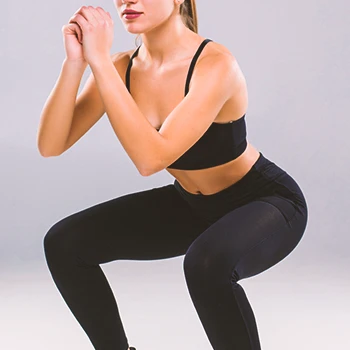
As a personal trainer, I know that one of the big problems many amateurs have is maintaining a good balance with the bar on their chest.
With the above front squat variations, you can still achieve the same strain on muscles without the risk of losing your balance.
4. Added Variety in Your Training Routine
And finally, with slight variations like performing a single-leg deep squat, hack squats, or any of the other variations mentioned above, you’ll trigger a slightly different muscle response.
And that variation can then lead to improved hypertrophy and faster muscle building than if you did the same exercise all the time [3].
Front Squat Alternatives for Rehabilitation
As a fitness trainer, I often work with clients who have mobility restrictions or are in rehabilitation. Here are some front squat alternatives that are effective yet gentle on the joints:
- Chair front squats: Ideal for beginners or those with limited mobility. Start seated in a chair and stand up, focusing on using the leg muscles while keeping the core engaged.
- Wall squats with exercise ball: Place an exercise ball between your back and a wall. Squat down slowly, ensuring your knees don’t extend past your toes. This variation reduces stress on the knees and back.
- Partial squats: Limiting the range of motion can help those with knee or hip issues. Perform a standard squat but only go down as far as comfortable, gradually increasing depth as strength and flexibility improve.
- Box squats: Squatting to a box or bench is excellent for controlling squat depth. It helps in maintaining proper form and is less intimidating for those new to squats or recovering from an injury.
FAQs
Are Front Squats Necessary?
No, front squats aren’t necessary, and there are many variations of this leg exercise. While the front squat can be one of the most effective ways to strengthen your legs and core, you can dial up the intensity without requiring a squat rack or Smith machine.
Are Front Squats and Goblet Squats the Same?
No, front squats and goblet squats are not the same. While they both have the weight centered forward, a goblet squat will typically involve much lower weight ranges.
Why Is It Hard to Do a Front Squat?
It’s hard to do a front squat because many people don’t have wrist flexibility or shoulder strength to support the weight. Holding the bar in place to avoid toppling over ends up putting a lot of strain on the wrists, and it might be a good idea to wear straps.
What Machine Mimics Front Squat?
The leg press mimics the front squat movement. Some gyms also have a hack squat machine that creates very similar movements with a slightly more upright body position. Both machines are great for activating the same leg and core muscles.
References:
- https://www.medicalnewstoday.com/articles/benefits-of-squats#types
- https://www.ncbi.nlm.nih.gov/pmc/articles/PMC9256291/
- https://www.ncbi.nlm.nih.gov/pmc/articles/PMC6934277/
About The Author
You May Also Like
